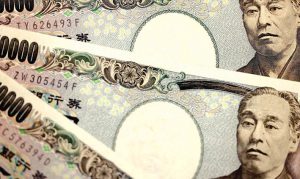BLOOMBERG
Haruhiko Kuroda finished his last meeting at the helm of the Bank of Japan (BOJ) by buffeting markets again with a straightforward stand-pat that contrasted with the explosive launch of his massive stimulus program a decade ago.
The BOJ left its negative interest rate and its cap on government debt yields untouched at the shortest regular meeting during Kuroda’s watch, as it stuck to its view that inflation at more than twice its 2% target level still isn’t sustainable.
The yen weakened as much as 0.6% before paring the drop to trade around 136.30 per dollar. The yield on 10-year government debt fell more than 11 basis points to as low as 0.385%, compared with the BOJ’s yield cap of 0.50% as bets on policy change were pared back for now.
The decision came shortly after parliament formally approved Kazuo Ueda to succeed Kuroda in April. Ueda will face the challenge of how to manage a stimulus program showing signs of strain, and how to pare it back without jolting markets should the central bank under his leadership judge that its inflation target has finally been achieved.
While the strongest price growth in more than four decades suggests Kuroda has dragged the economy out of the doldrums of deflation as he was tasked to do back in 2013, economists are sharply split on whether his record-breaking stint at the central bank has been a success or a failure.
“I would say Kuroda passed his mid-term exam by correcting a strong yen, boosting stocks and generating a sense that something might change among ordinary people in the first years of his term,†said Kyohei Morita, chief Japan economist at Nomura Securities.
A Bloomberg poll conducted this month shows the outgoing governor scraped a pass mark of 60% from BOJ watchers for his time at the bank. A breakdown of the results indicated that 56% assessed his decade of unprecedented stimulus as a success, while 44% said it was a failure.
Kuroda had aimed to do what no other governor had done before him by sparking 2% inflation in two years via a shock-and-awe splurge of asset buying that would change the behaviour and expectations of companies, consumers and investors.
 The Gulf Time Newspaper One of the finest business newspapers in the UAE brought to you by our professional writers and editors.
The Gulf Time Newspaper One of the finest business newspapers in the UAE brought to you by our professional writers and editors.
